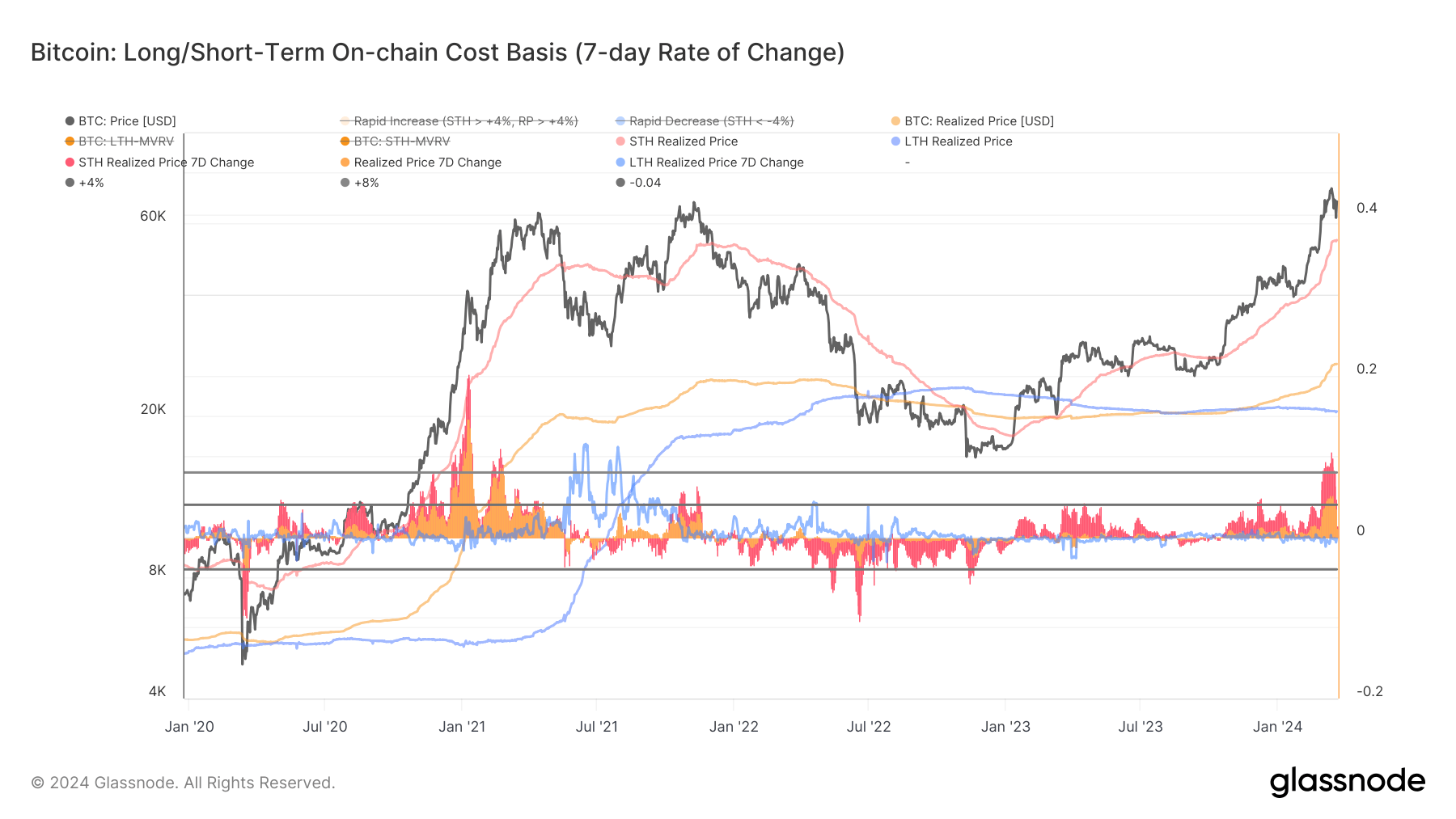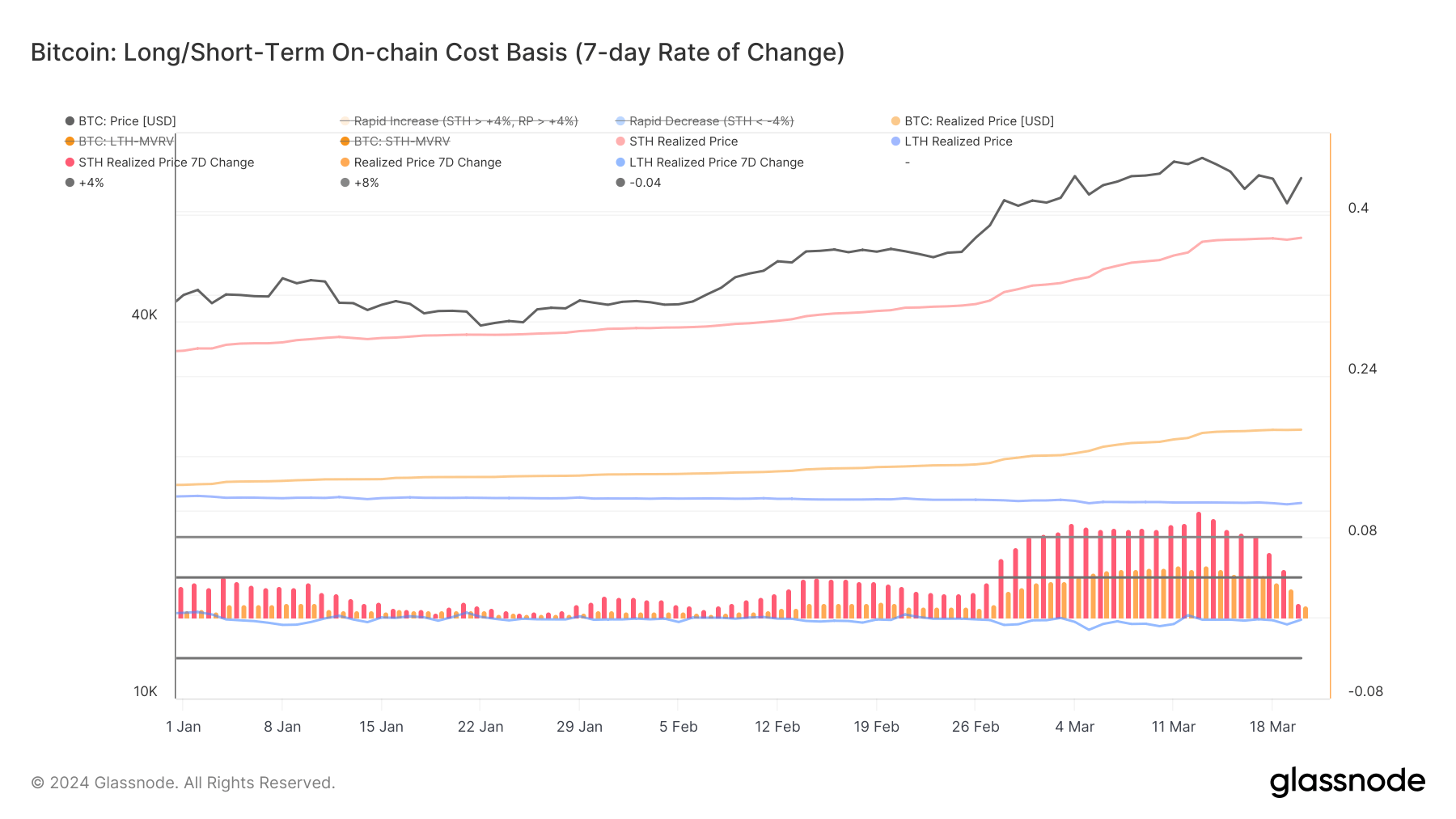The realized value of Bitcoin represents the common acquisition value on the chain. It’s a helpful metric as a result of it completely measures the underlying worth of the market at any given level. When analyzed via the lens of short-term and long-term holders, it offers perception into the funding horizons of cohorts and their acute influence on the value of Bitcoin.
The 7-day realized value change of those cohorts offers a significantly better visualization of the metrics. The 7-day realized value change for short-term holders hit a three-year excessive on March 13 at 10.62%. The 7-day realized value change for long-term holders on the identical day was -0.183%, which represents a slight lower from earlier weeks.

This distinction between the realized costs of STH and LTH signifies a powerful inflow of short-term speculative curiosity out there. New market entrants entered at increased value ranges than long-term holders between March 6 and 13, growing the cohort’s realized value. The expansion within the realized value of STH culminating on March 13, when the value of Bitcoin peaked above $73,100, signifies that vital investments had been made at or close to peak costs.


Monitoring each LTH and STH realized value adjustments is significant as a consequence of their skill to indicate shifts in market sentiment and potential strain factors. For instance, a rising realized value of STH, particularly as the value of Bitcoin rises, might sign rising optimism or speculative demand as new entrants are prepared to speculate at increased value ranges. A comparatively secure or falling LTH realized value change signifies holding sentiment amongst long-term traders who don’t want to maneuver their holdings regardless of value fluctuations, thus strengthening the underlying notion of market worth.
Information from Glassnode confirmed the market at a possible inflection level. The dramatic enhance within the value change realized by STH, along with the numerous enhance within the value of Bitcoin, indicated a short-term bullish sentiment pushed by speculative buying and selling and new entrants attracted by the momentum. Nevertheless, spikes as sharp as these seen on March 13 not often final quite a lot of weeks earlier than seeing a big correction, which is strictly what occurred final week.
The quick holder’s 7-day realized value change was down 1.469% via March 20 after Bitcoin fell to $61,000 after which recovered to $68,000. This sharp drop signifies that speculative enthusiasm has cooled and the market has entered a consolidation section. The info means that the shopping for momentum and optimism that led to a big enhance within the realized value of STH, and by extension the value of Bitcoin, has moderated, resulting in extra cautious sentiment out there.
A number of interpretations could be drawn from this information level. First, the discount within the charge of change within the realized value of STH might point out that the influx of recent capital at increased valuation ranges has slowed. The present decline in each STH’s realized value change and Bitcoin’s market value can also point out a discount in promoting strain from short-term holders.
Usually, a excessive STH realized value change, particularly when it hits a report prefer it did on March thirteenth, might point out an elevated chance of promoting exercise as quick holders look to take earnings. Nevertheless, as soon as this strain fades, it could stabilize costs, albeit at a stage decrease than latest highs, because the market absorbs the consequences of earlier speculative buying and selling.
Wanting forward, this era of recalibration might pave the way in which for resistance to kind at this value stage because it permits the market to digest latest positive aspects. Moreover, the conduct of long-term holders will proceed to be a vital issue to look at, as their stability within the face of volatility usually serves as an anchor for market stability.
